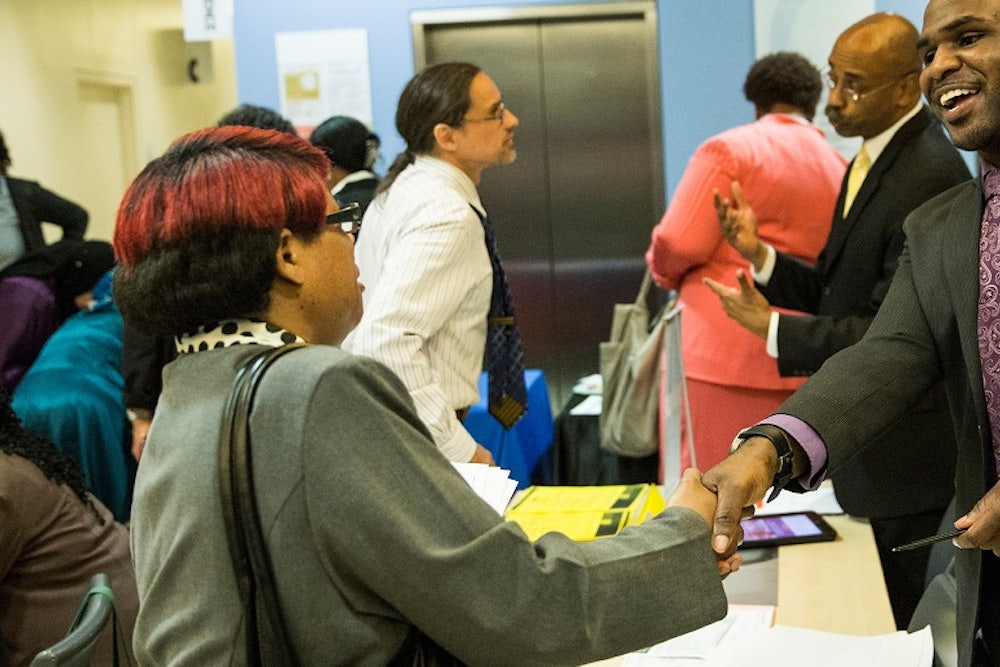This year was a pretty good one for the U.S. economy. Employers have added more than 2.5 million jobs through November. Growth picked up substantially in the second half of the year, after a nasty first quarter in which bad weather caused the economy to contract. The price of oil has plummeted nearly 50 percent in the past six months, giving Americans an effective tax cut during the holiday season.
But one of the most important, positive developments of the year has received little attention: the stabilization of the labor force participation rate.
It not as complicated as it sounds. The labor force participation rate is the percentage of Americans who are either employed or looking for work—i.e. the percentage of people in the labor force. When the Great Recession struck, the participation rate was around 66 percent, slightly down from its peak of 67.3 percent in 2000. Since then, though, the rate continued to decline even after the recession ended and the recovery began—until this year, that is. The labor force participation rate, at 62.8 percent, is the same now as it was in December 2013.

There a few factors that contributed to the fall in the participation rate from 2007 through 2013. The population is getting older as Baby Boomers retire, meaning a smaller percentage of the country is working. This is a structural factor—it was going to happen regardless of the underlying economic conditions. That’s why the Congressional Budget Office forecasted in 2007 that the participation rate would decline to approximately 65 percent by 2014.
But demographics alone cannot explain the decline in the participation rate. Cyclical factors also play a key role. After the Great Recession, millions of workers dropped out of the labor force, discouraged that they could not find work. That drove the participation rate down. The clearest way to see the economy’s effect on the labor force is through the labor force participation rate of prime-age workers—those aged 25-54. This statistic won’t be affected by aging demographics or younger Americans choosing to stay in school instead of entering a weak job market.

The participation rate for prime-age workers has been slowly declining since the mid-1990s, with the exception of the mid-2000s. It’s not clear why that is. In separate articles the New York Times recently, Binyamin Appelbaum and Clain Cain Miller and Liz Alderman looked for an explanation for the respective falls in employment rates of men and women, although none of them came to a definitive answer. Regardless, the financial crisis clearly accelerated that long-term trend, causing American workers in their prime to drop out of the labor force—until it also stabilized in 2014.
Economists have forecasted—and hoped—that an improving economy would cause some, or even most, of these workers to reenter the labor force. But up until this year, there were few signs of that. Of course, the participation rate hasn’t started increasing yet—and based on the pre-crisis long-term trend, it may never return to its previous level. But the stabilization of the participation rate is a welcome development.
It’s also important for the U.S. economy. The most frightening consequence of the Great Recession is that millions of prime-age Americans may never return to work. Instead of contributing to the economy, they may instead rely on the government. At this point, it’s clear that this has happened to some Americans. Those who have started collecting Social Security Disability Insurance, for instance, are unlikely to return to work.
But right now we are entering a key moment in the recovery. As the economy shows signs of life, will the millions of discouraged workers reenter the labor market? Or has the Great Recession, and the subsequent policy failures, permanently disconnected them from it? On those questions, the news was good in 2014. Let’s hope it’s even better in 2015.
